MICHAEL ECKERSON February 28, 2023 All Feature Vehicles
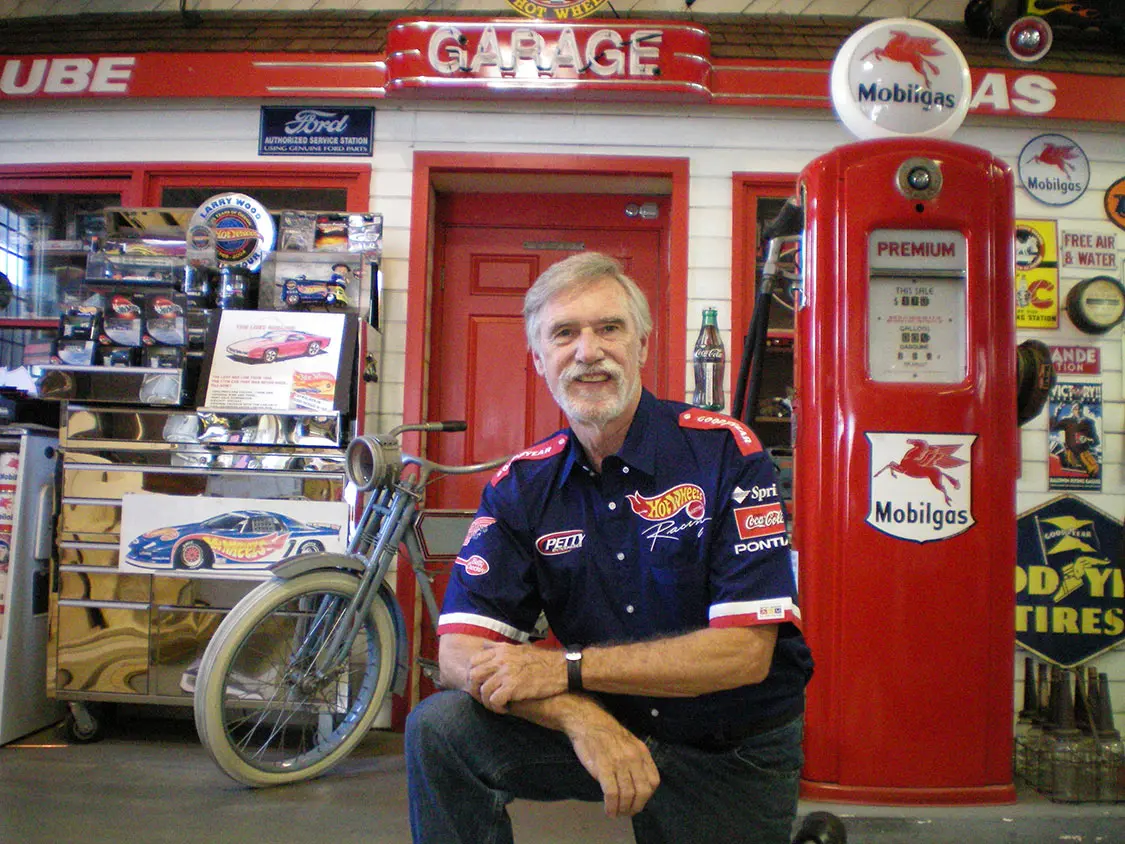
I met with “Mr. Hot Wheels” Larry Wood in his shop in an industrial section of Long Beach, California. His workshop is packed with his Hot Wheels contributions, memorabilia, and car projects in various stages. The walls are covered in artwork, collectables, neon, and everything cool I wish I had in my garage.
Larry is the uncle you wish you had. He’s very kind and he shares the details of his life in an open, modest manner. He’s rather humble for someone who has influenced so much of our “hot rod lives”.
I sat down with Mr. Hot Wheels to learn more. I came away with an appreciation and an undertanding that Larry Wood is more than a Hot Wheels designer; Larry is a car guy with a talent that brings cars to life.
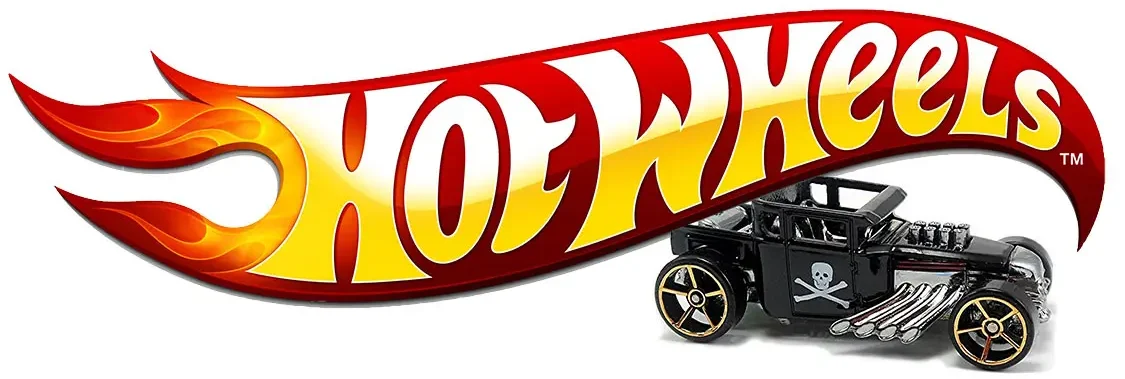
D! Thanks to you and other Hot Wheel designers, kids from 1968 and on played with Hot Wheels. What toys did you used to play with as a kid?
LW I grew up in Connecticut and I never had any car toys. Everything I had was cowboys and Indians. We would run around and chase each other in the woods playing cowboys and Indians, but I don’t think I ever had a car toy, which is kind of funny after what I ended up doing for a career.
My parents would kick me out of the house in the morning and not expect me back for the whole day. We had a big dinner bell they would ring and no matter where I was I could hear that bell and I would head home.
D! When did all that change?
LW So, until probably 15 years old or so, I didn’t even think of cars. Around that age I started noticing cars. I lived near a road that went to the beach and all the cool cars would be going to the beach in the summer. My buddies would sit on a little hilltop watch the cars go by and of course, this was the mid-50s and we’d see pretty radical stuff; Mercs, Cadillacs, and others. It was fantastic to see all those colors they were painted back then. It was really cool to see those cars. I think that’s what sparked my interest
But the hot rod thing came to me when my dad, who was a football coach, he’d taken away a hot rod book some kid was reading because he wasn’t doing his football thing. It was Hot Rod Magazine. He brought it home and threw it on a table. And that was the beginning of my life is a car guy.
I started seeing what all these people in California were doing with cars. Driving cars with big engines and wild paint jobs, and flames. That was something I’d never seen before.
About fifteen or sixteen I actually started driving in the backwoods with my buddies. We would buy junk cars, get them running and drive them around the back roads flying around sideways. It’s a wonder we didn’t get killed the way we were driving those cars. There was no nobody out there and we’d go through the apple orchards. If we’d crash the cars we’d throw it away, go get another and keep driving around.
I actually built a flathead motor with dual carbs in my dirt floor garage. Then I got a ‘36 Ford chassis to put it in and we drove that around the neighborhood for a while. Then one day I found a ‘36 five-window Coupe to put it in. That ended up being a fun car to drive.
That was my hot rod beginning.
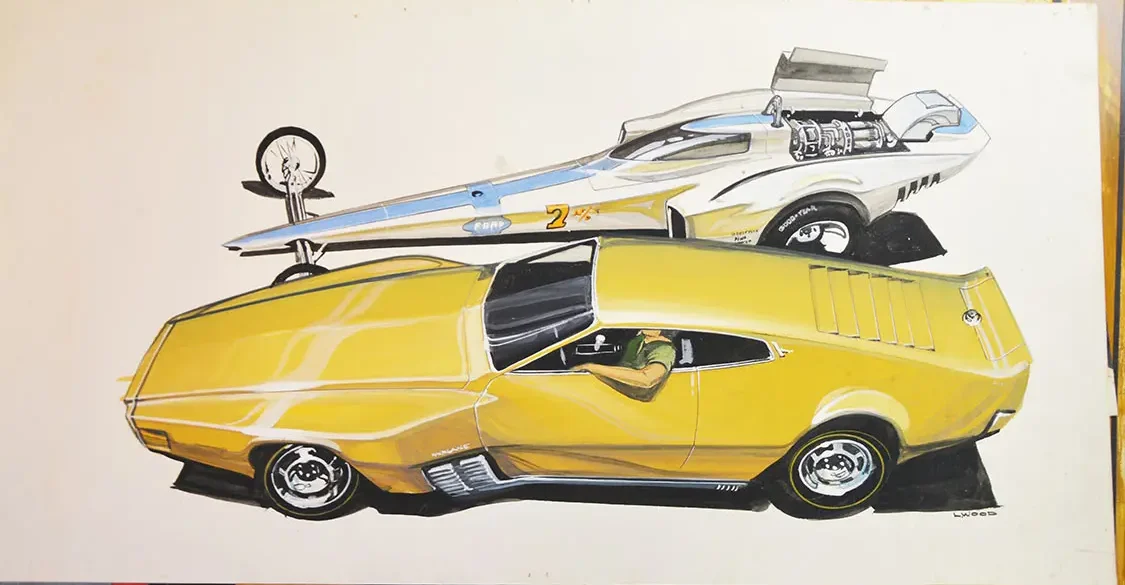
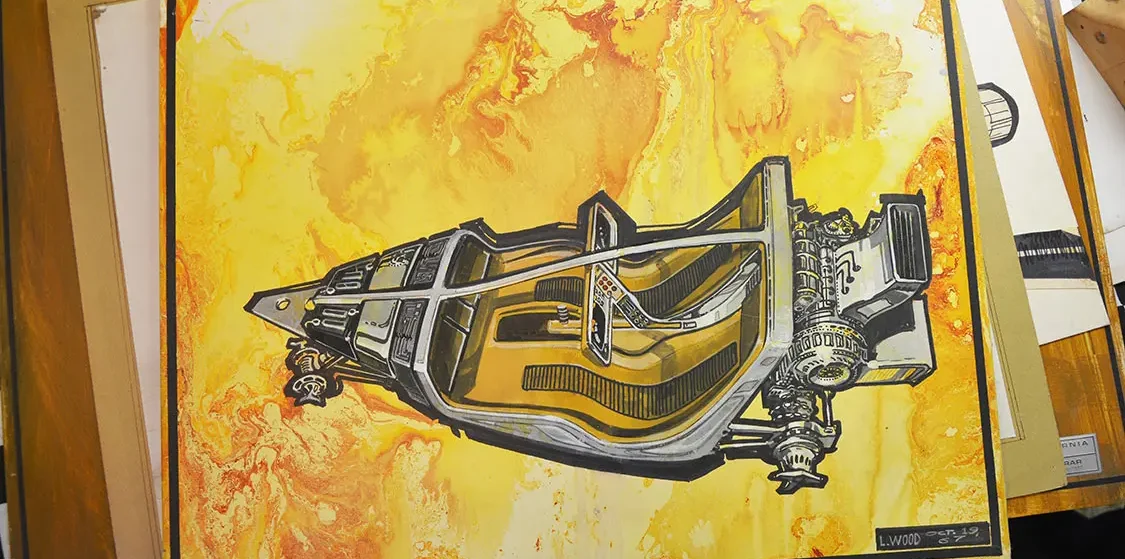
D! Where did you learn how to do the Paint Body and engine work?
LW Back when you were seventeen, eighteen years old, you just did it. I was doing the bodywork back then, I did paint, all sorts of stuff. Now, I wouldn’t do it, of course, the craftsmanship is for me too important. Back then, you just add more Bondo and grind it down a little bit and try to make it a little better. But now, you’re trying to do a beautiful weld and make all the parts fit perfectly. So that’s probably why I probably wouldn’t tackle some of the stuff that I did back then.
D! You were a designer at Ford in the ‘60s, when you were brought on at Mattel. How was that transition? And what was the Mattel work environment like?
LW I graduated from Art Center in ‘65. I worked for Ford till basically ‘68. It was suit and tie. You had to wear a vest, a tie and a jacket every day at work. You had to, you know, represent the Ford line and be presentable. This was every day at work.
I get to Mattel (and it’s the sixties) it’s completely the opposite. You know what I mean? This is like, wear your Paisley shirt, you know, Paisley ties. And the girls of course in the sixties wore their miniskirts and everything. It was great! It was fun. Everybody was playing jokes on each other.It was just the absolute greatest place to work. And, of course I got paid to draw hot rods, so it was pretty cool.
… it was just the absolute greatest place to work.

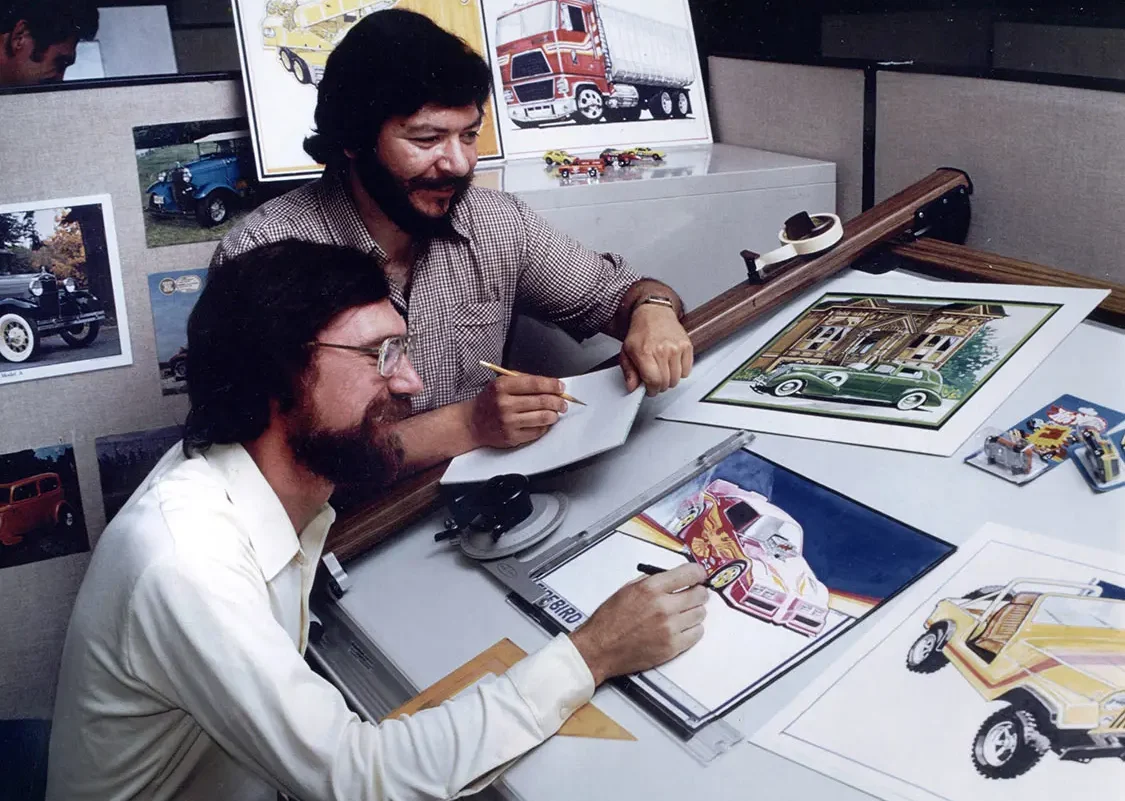
D! That sounds like a fantastic career opportunity. And what a great period in time.
LW That it was.
There’s two years in between Ford and Mattel when I worked with Lockheed on the L-1011 airplane interior. We did some pretty neat stuff. A lot of stuff was breakthrough, interior design. And so that was interesting for a while. Of course, then it got boring.
The story that most people know was I went to a party and the guy that was putting on the party, his kids were playing with Hot Wheels. I didn’t have kids yet. I said, what the heck of those? He said these are Hot Wheels and that’s what I do. I’m a Hot Wheels designer. I said, hey, that’s great. He says, yeah, but I don’t like it – I want to do space stuff. I said, hey, I’m willing to do it. I thought I’ll try that as a job for a couple of years till I find a real job. And so he got me in and I actually interviewed got the job and my life hasn’t been the same since.
D! What a transition from one working environment to the other. Thank you for sharing that.
LW One thing I should say is back in the late ‘50s, when I was growing up, my goal in life – of course I thought would never happen because I’m in this little town in Connecticut. My dream was to have a hot rod and cruise Pacific Coast Highway and draw hot rods.
There is only one job in the world that would give you all those together. There was not a chance in hell of me ever doing that exact thing. So, you know, sometimes it’s hard to believe I actually got there.

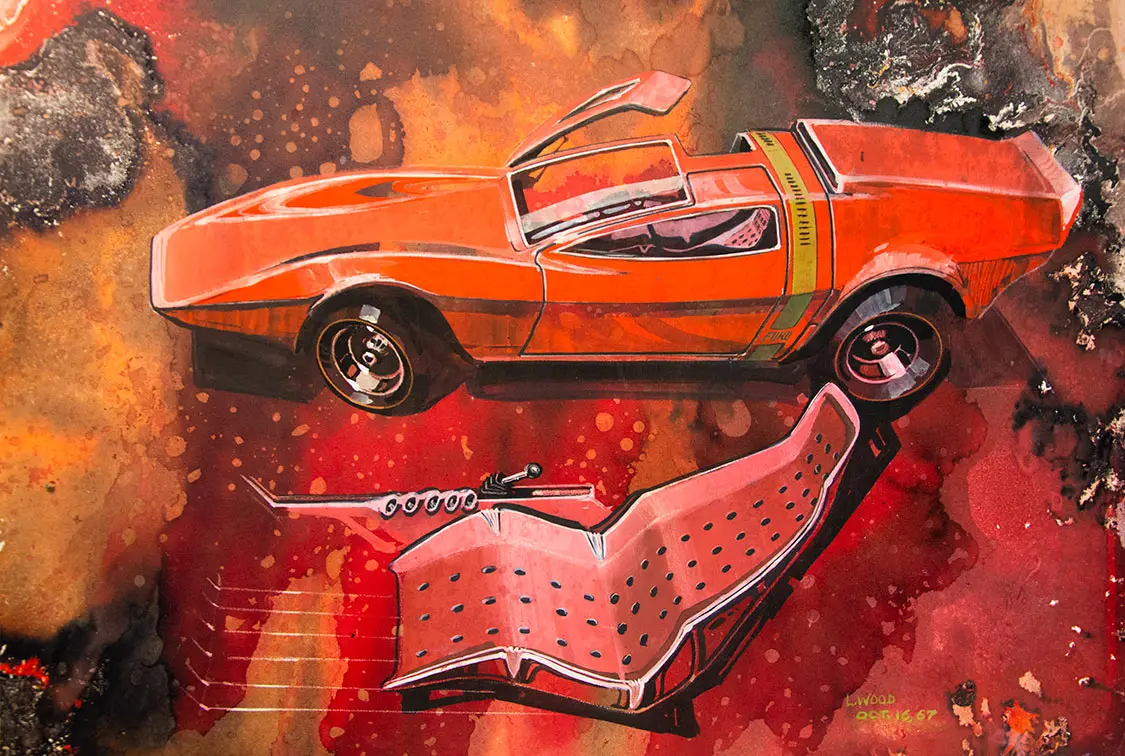
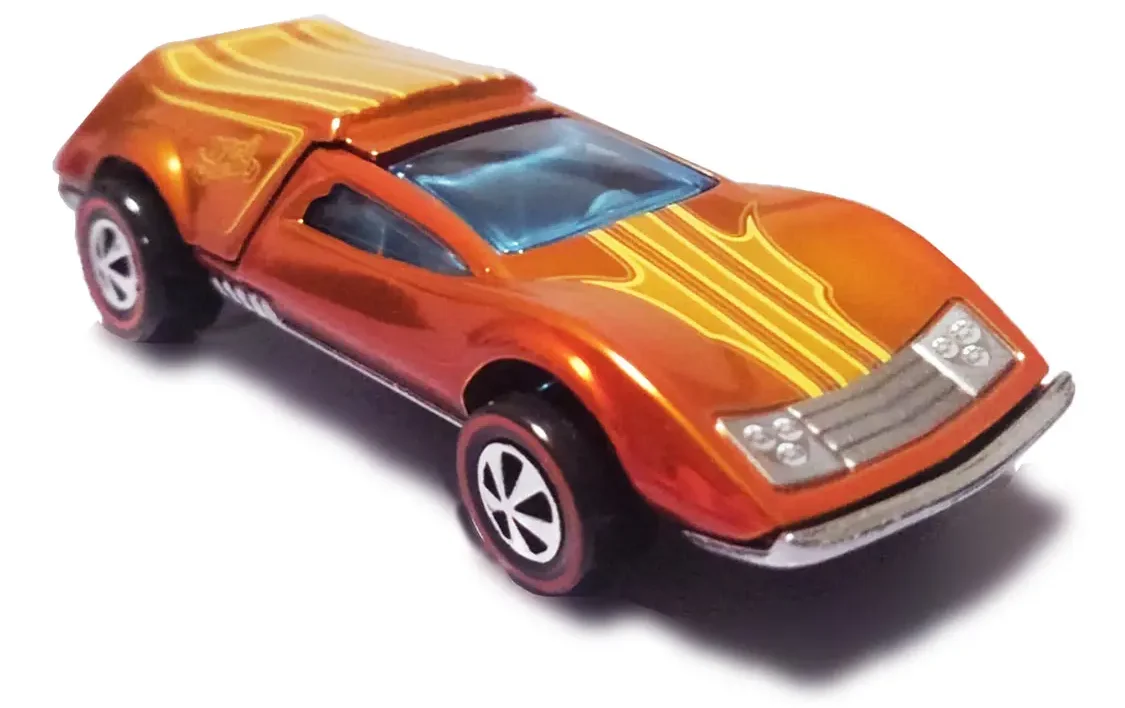
D! It’s a birthday wish come true.
LW Amen!
D! Circling back to when you were working at Ford. What were the Ford projects you worked on?
LW When I got to Ford, they had a interim thing for kids coming out of school. You went to different Studios as an intern and you learned about those Studios. Basically, I was at Mustang, I was at Lincoln. I never got to do the truck. I kind of wanted to do trucks.
My funnest job was Interiors, advanced interiors because then you weren’t stuck with the car already designed and doing door handles, and grilles, and things like that. In advanced Interiors. You got to do some pretty wild stuff. I think it was more to let you cut loose a little bit before they put you into a actual Studio.
D! It’s incredible to think that you worked on all those different platforms that are such automotive icons.
LW The cool thing is it back in the ‘60s Ford was really into racing. So I could sneak down and watch some of the GT40 prototypes being made. I could go over, listen to the engines being run on the dyno. And since I was a performance guy, I did all sorts of things like blowers sticking through the hood, big tires on the back, a lot of things like that. So I take a little bit of credit for getting the Mustang shaker hood scoop even though I didn’t finish it. It was just an idea.
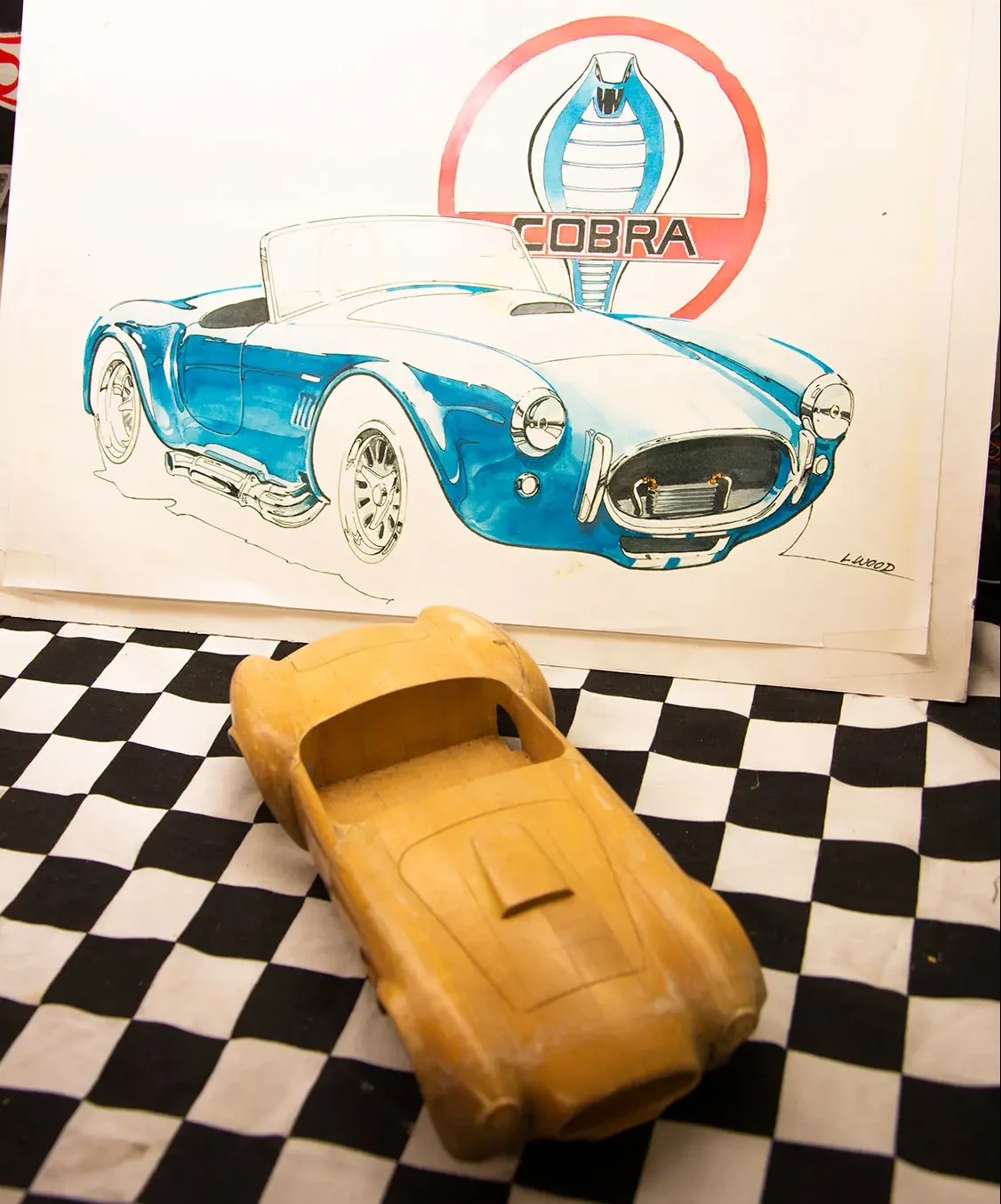
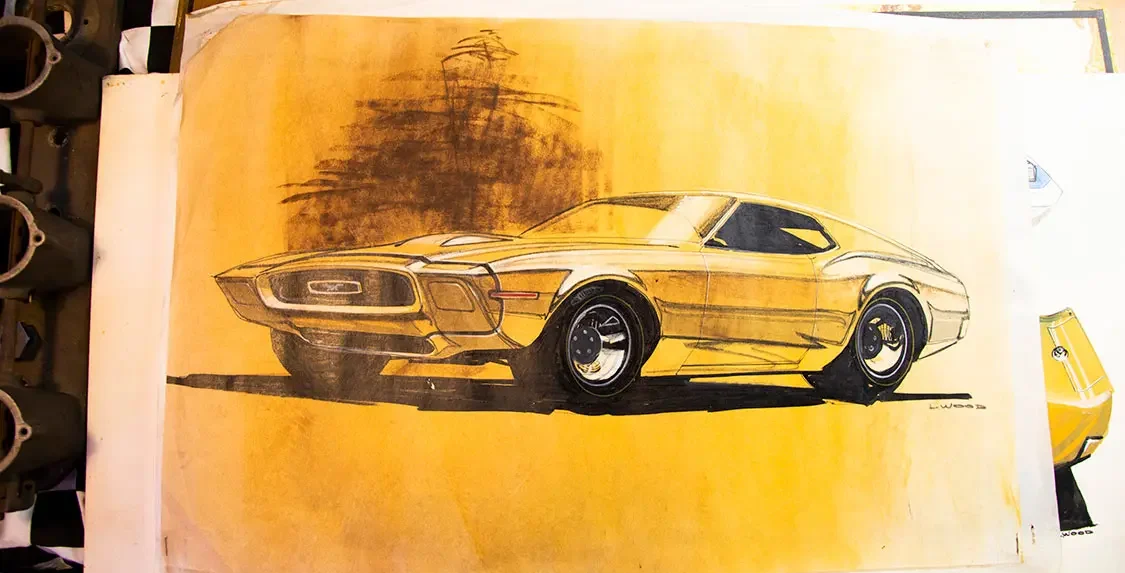
D! The Tri Baby was your first Hot Wheels car design. What was your inspiration for that?
LW It’s funny because when I first worked at Ford, as I said, I did door handles and grilles and things like that because you’re just an intern. You’re not going to get the good jobs. But one of the things I did in one of my Interior Studios is I did in the background of a seat design. I did a wild-looking sports car and, you know, until recently, I didn’t realize, but that sports car I drew at Ford, was actually the Tri Baby.
I was going through some drawings about five years ago. And I said, holy mackerel! It’s the exact same car I did at Ford.
Back then, when I got to Mattel, my job was to come up with a car, and as I said, all of a sudden I had to have the job done in a week. A whole car – not just grilles and door handles. So I said, what the heck, I’ll draw a sportscar. Turns out I already had that car designed in the Ford studio long before it became a Hot Wheel.
D! You’re an accomplished designer using traditional pen and ink. Did you incorporate any computer graphic software when it became available?
LW That’s basically the reason I retired. They were going 100% digital. I dabbled in a little bit, but my brain just doesn’t work with the computer. It has to have a pencil in its hand to get a design going. I think I did one car on the computer, but I went right back to the drawing.
They would take my chicken scratches and they would convert them into digital. So although I was doing it with my pen and ink, they would convert it to digital. And then from then on, we start making the models.
In the very beginning, we would make wooden models from my drawings and that was kind of cool because that wooden model would be the kind of thing you could change little things here and there, and it was usually three or four times. The model was nice and big and you would change little things and say, hey, make this wheel well a little bigger, or change the grille, or something like that.
Then when they went digital, you would see it on the screen and you could rotate it around until you got a view you liked, and then you can change it instantly. So, corporate-wise, it was a fantastic move. The digital stuff is so much easier and nicer to work with, but not for a guy that likes to work with their hands and see the product in their hands.
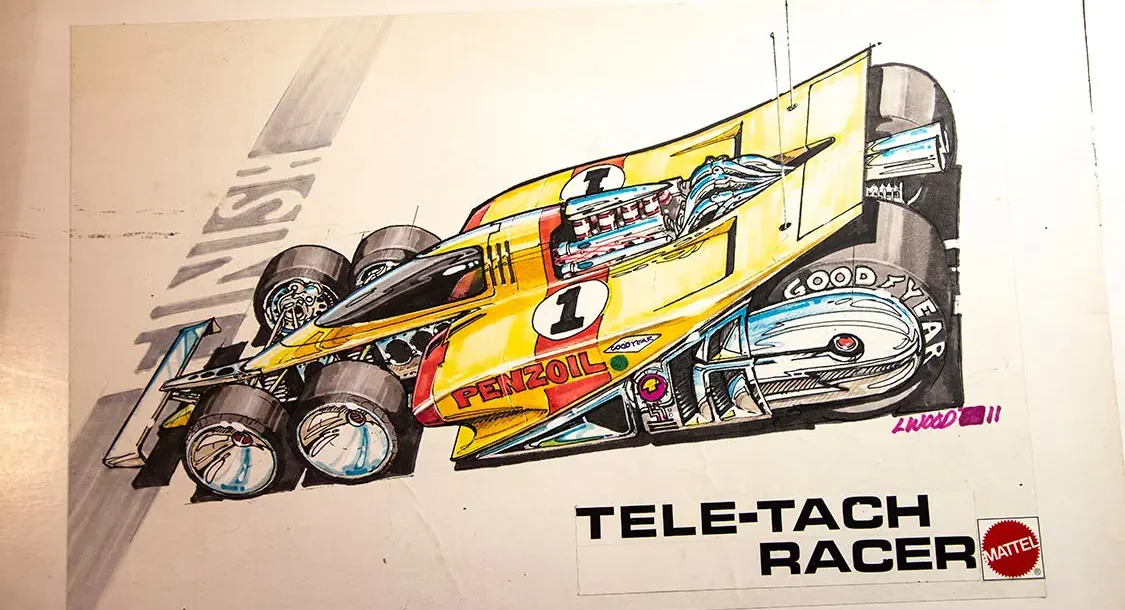
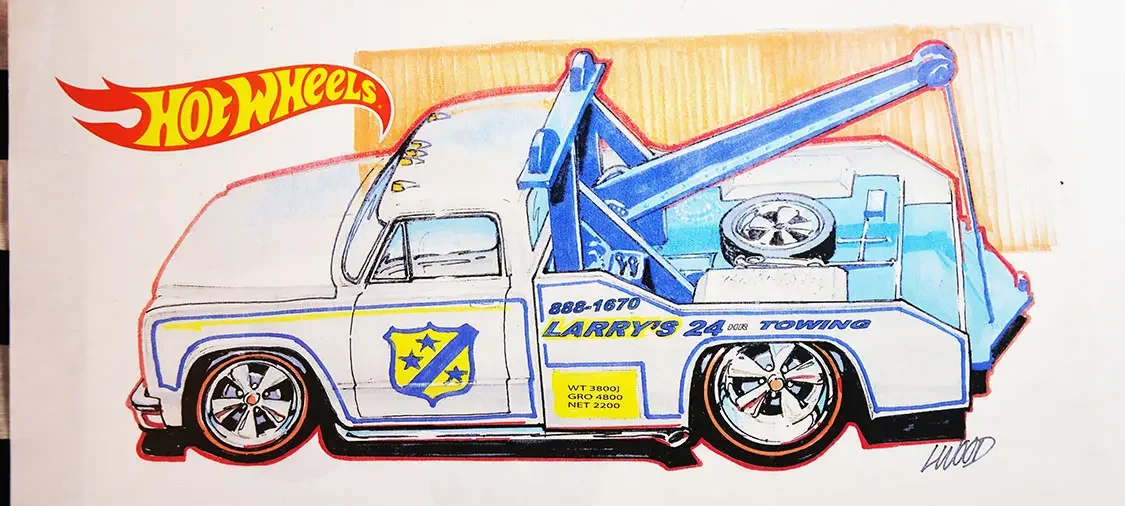
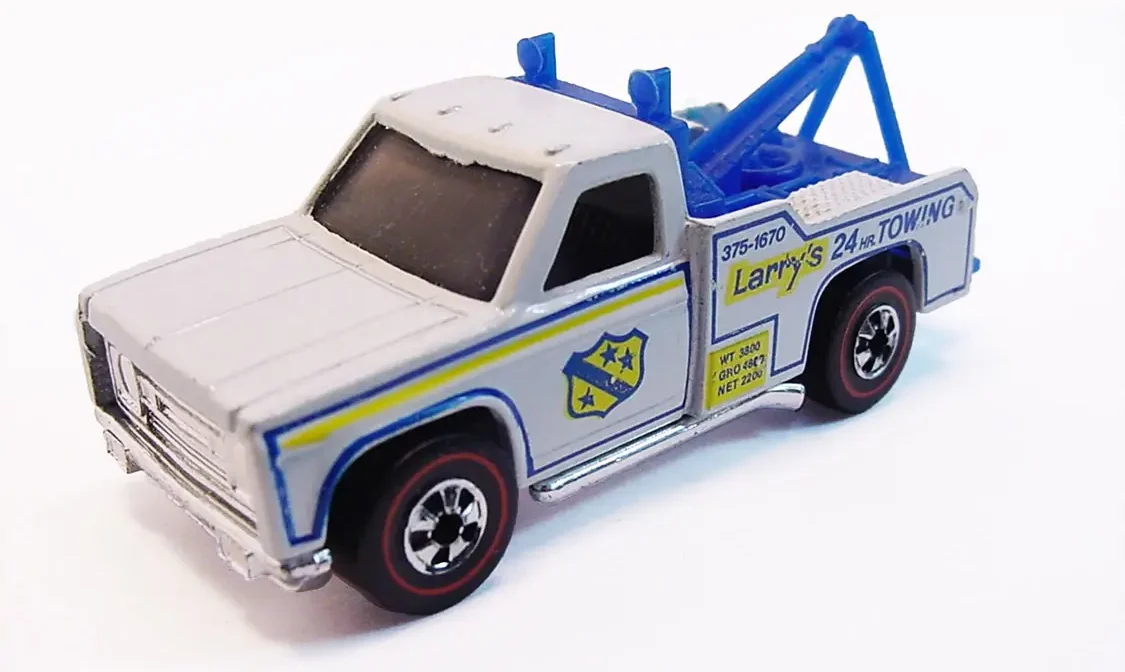
D! Take us through the process of how Hot Wheels were made during your time at Mattel.
LW Basically, you would do a drawing which we call the B-sheet because it was done on a B-sheet size paper. You would put them on the wall at the beginning of the year and we’d pick certain cars. They’d say they want to do three sports cars, four hot rods, six dream cars, and so on. The designers would fill in the slots.
Now, when I was there by myself, I actually was the only guy there for twenty years. So I would be able to put the stuff on the wall that I wanted to do, and people that would put their two cents in. But in most cases, I got to do the stuff I like to do. That’s all basically still the same, except they’re doing, you know, 50 to 100 cars instead of my 6 or 10 that I did every year, back then.
So you put the drawing on the wall and pick the car, then you’d have to do what they call a 3-view, the side view, top view, front view to get a proportion of the actual size of the car and that’s what would be transferred into the pattern. And when I was there, it was transferred into a wood pack and that’s what we worked with. Then we would send that to the place where they built the tools and then shrink it down to the actual size.
The difference today is. It’s all done on the computer. As I said, my stuff was all pen and ink, and back then the way the patterns were done it would be handmade. They would take weeks, you know, just beautiful stuff. Now done with the computer that has it done in a couple of days.
D! Now they do 3D printing?
LW Yep.
And the cool thing about digital is if you wanted to change something you could change it real quick and then get another 3D model. When you had the wood pattern you had to make a major change and did have to start over again or have to cut the pattern up and change a few things on it, which happened once in a while.
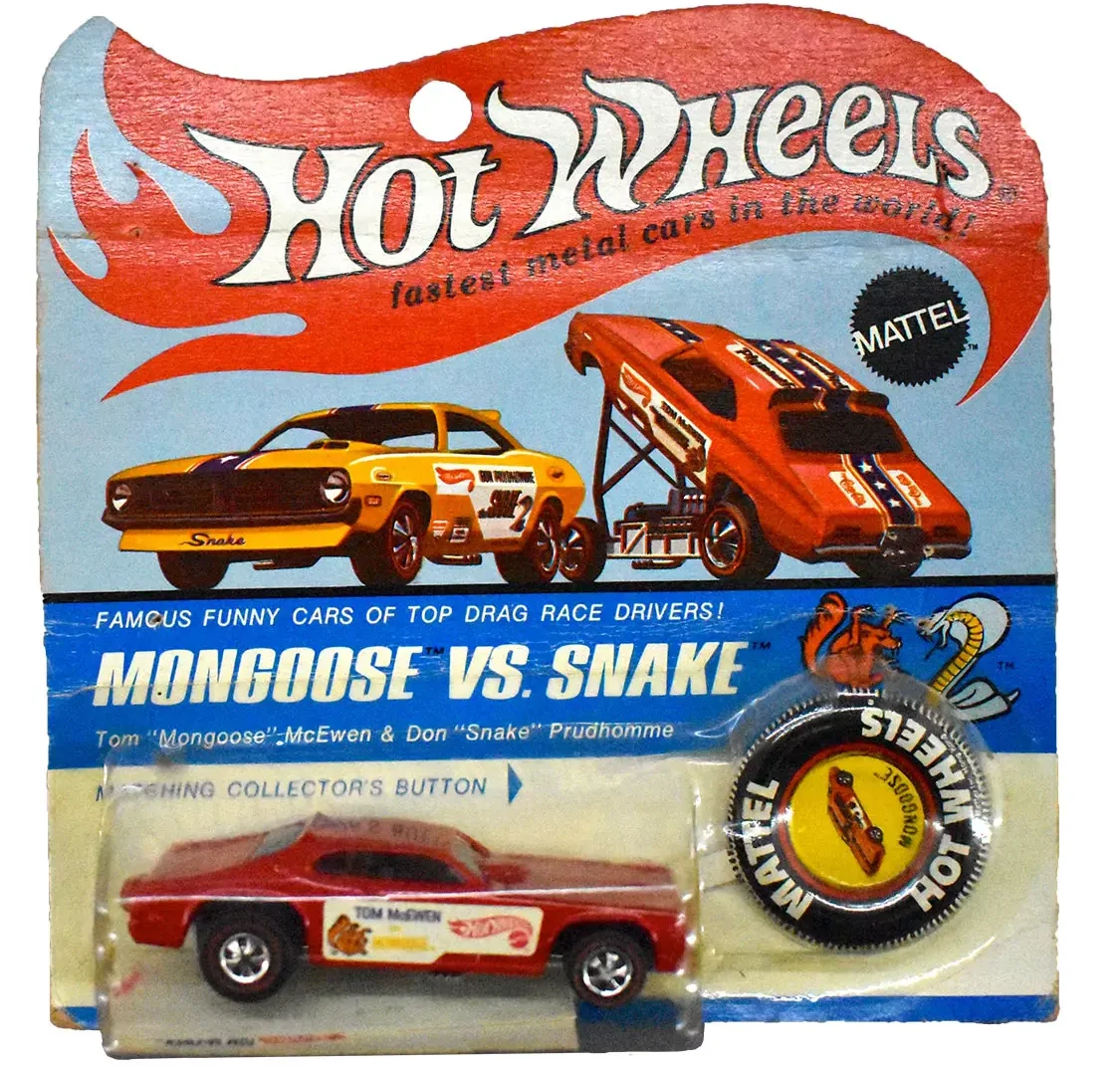
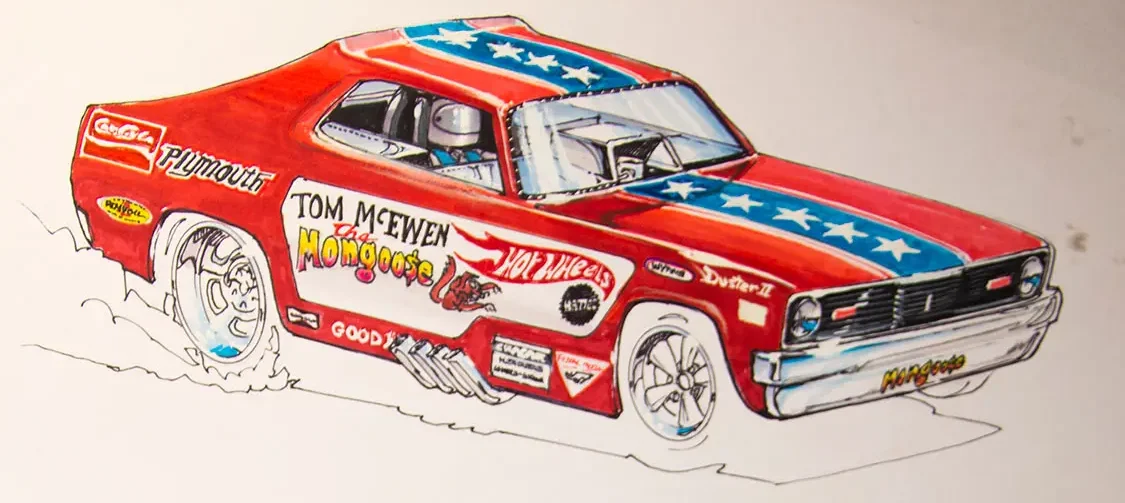
D! Which comes first, the name or the design?
LW The design comes first.
Back in the old days, they usually had a guy that was in charge of the names that that’s where some of the cool names came from the very beginning.
Later on, we kind of wanted to make the names a little more serious. So we kind of took over and the designers and the marketing people would come up with a name for the car. Sometimes I get a whole list of names and people would go kick it around back and forth to get the name that seemed to fit.
D! Did you play any part of the drawings that appear on the package art?
LW At the beginning of it I just was coming up with the concepts. Later it was a different department. But back in the day, since I was the only designer there, I did a lot of the package concepts. I didn’t do the final art. I would send it out and have it done by an artist, but a lot of the package art concepts I would do and the same with sets.
I had a lot to do with the sets that Hot Wheels played with Snake and Mongoo$e. We would come up with all the designs, make the prototypes, and all the pieces that went with it, and the graphics that went on, the label sheet, and everything.
D! One of your more famous ones is Larry’s Tow Truck. Did you actually put your personal phone number on it?
LW Yeah. It seemed like a good idea at the time. I thought it would be like a business card. I would just hand it out, saying here, if you ever want to call me.
We made ten thousand a week or something like. Pretty soon, I started getting phone calls. My first phone call was Christmas Eve, some little kid called up and asked for Larry’s Towing and I thought, uh oh, I forgot about that.
They ended up taking it off and I got a letter of reprimand saying don’t do that again.
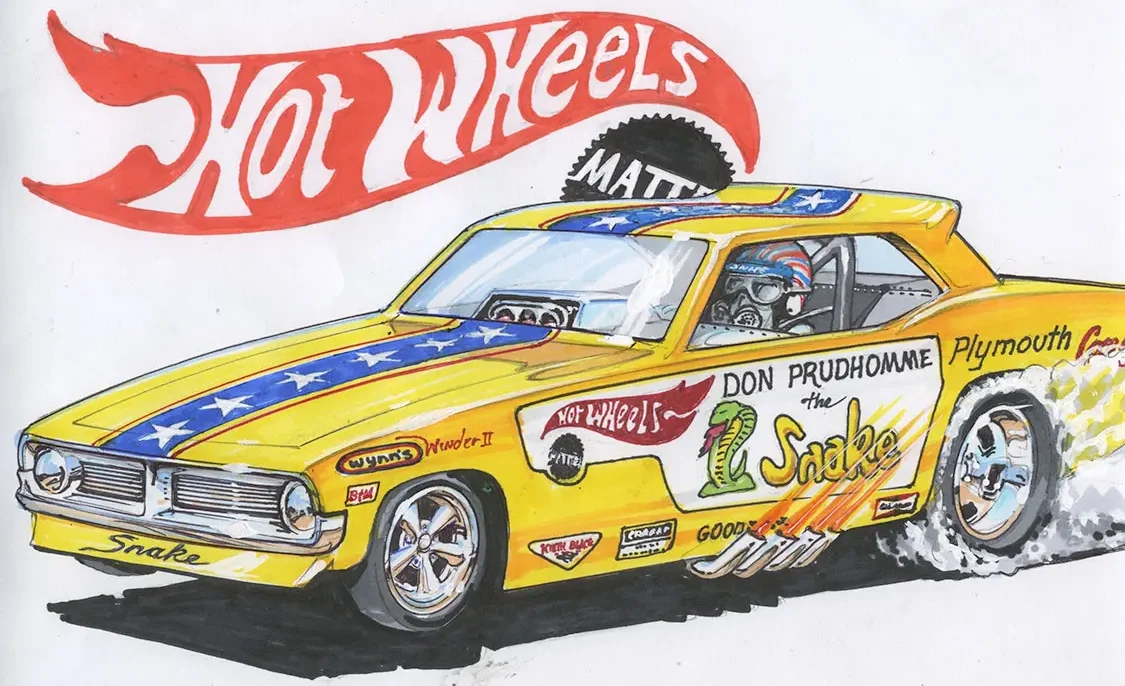
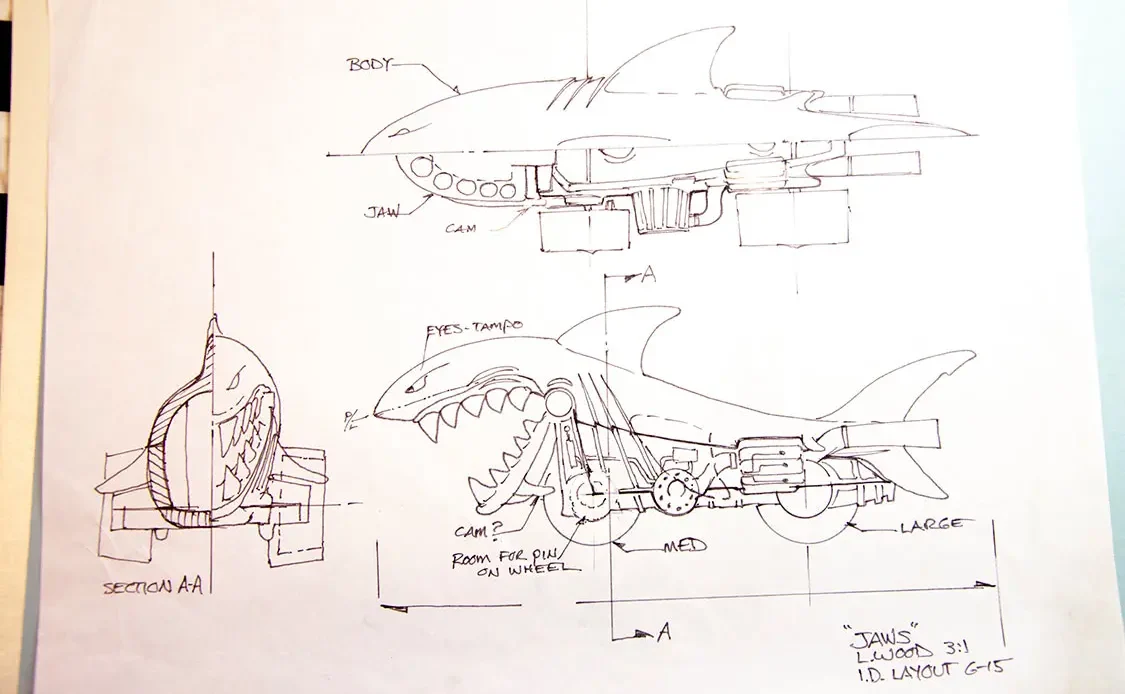

D! What are some other favorite projects you worked on?
LW Well, there were a lot of things but the thing that I probably enjoyed was working with Snake and Mongoo$e. I was into drag racing and I would go to Lions Drag Strip all the time. And here comes Prudhomme and McEwen walking in one day, and they said, hey, we just signed a contract. We’re going to build a funny car.
So I got to go out and take pictures of the funny car when it was being built. I did not do the graphics on the car. But I did the Hot Wheel car itself, the model and the graphics, the packaging, and assets and everything. Working with Snake and Mongoo$e was just fantastic. They were great guys. I got to the races and see them and it was was one of the highlights.
D! There’s obviously a worldwide love of Hot Wheels and everything that goes with it. What in your estimation is the magic of Hot Wheels?
LW I think the magic is in the first place is you can get any car you want for a dollar. I mean, you walk into the store and you know, you want a Lamborghini? You got it. Do you want an off-road truck? You got it. You want a hot rod? You got it… for a dollar!
The detail is also an important part of the magic.
What I tried to do when I was in charge was to add as much detail as I could. So when the kid flipped the car over and asked his dad, what is this underneath? The dad would say, oh, that’s a driveshaft or it’s a muffler, that’s the engine. Since I’m a car guy. I wanted to make sure all the detail in the Hot Wheel is as accurate as possible.
And later on, when I started doing the collector cars, the high-end cars that were selling to collectors. That was fun because I got to do all the individual parts. The chassis would be a part, the rear end would be a part, making it very detailed.
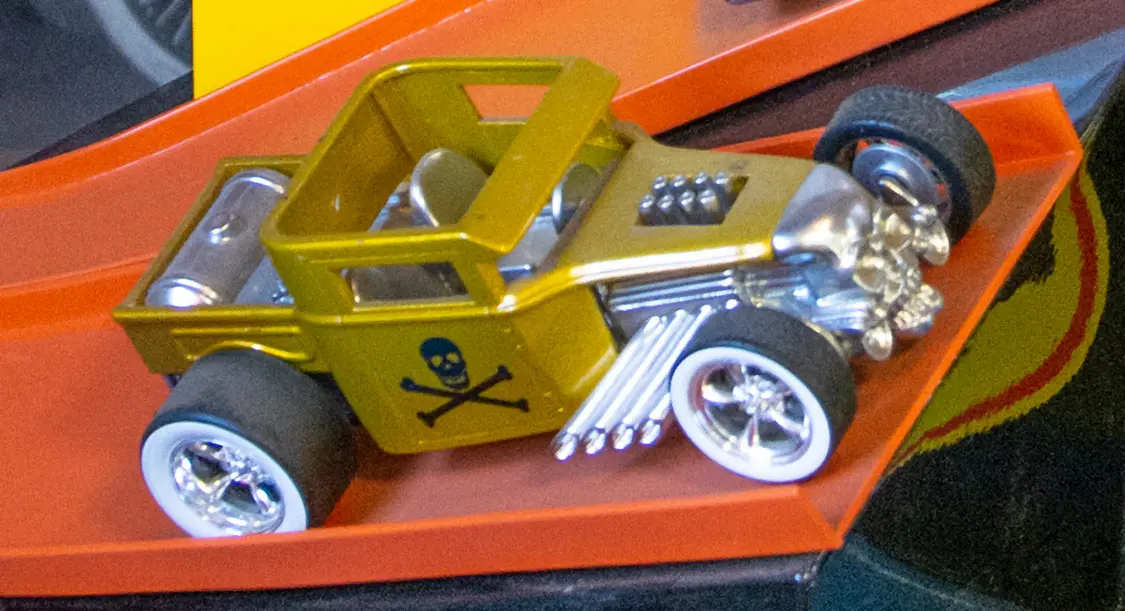
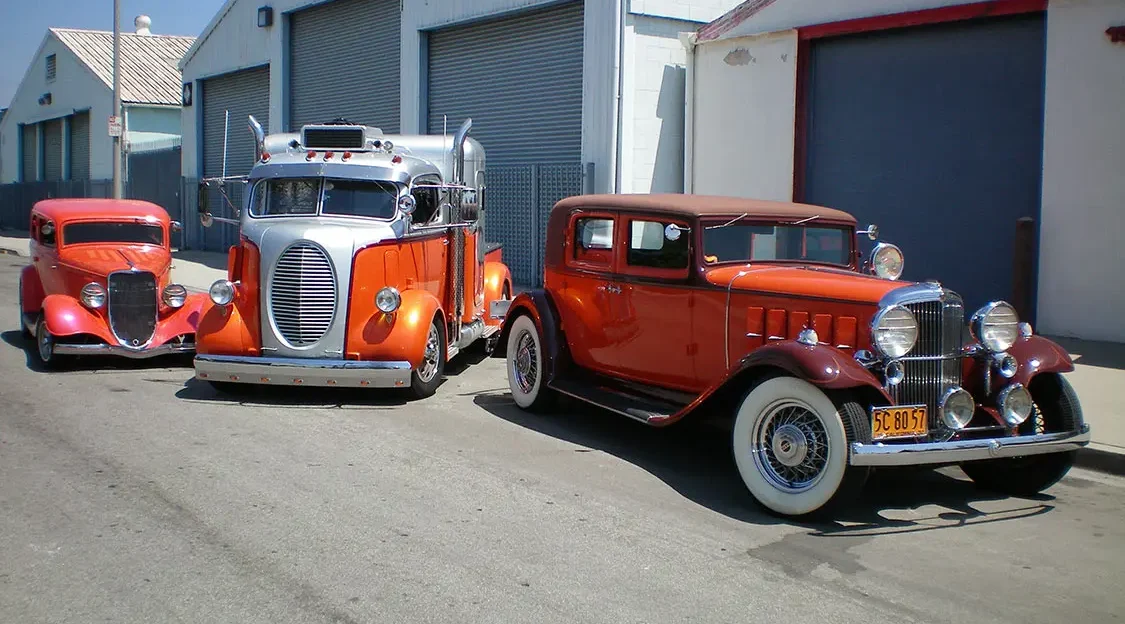
D! Speaking to the fact that you’re a car guy, and since our interview is being done in your studio shop, it definitely conveys that you seem to always have some project going on. Share with us some of what you are up to.
LW I spend more time building cars now than I do drawing. I think I’ve built five cars since I retired. I’ve got a Model A that I’m building. I’ve got a 1952 Jaguar that I’m building. I got a ‘51 Ford Woody that I just finished off and my ‘32 Nash, which of course, everybody knows. That’s my show car. But yeah, if I don’t have two or three cars going at one time, I’m looking for another car.
D! Do you have personal favorites?
LW I think my personal favorites right now are the cars that other people like collectors really enjoy. The latest one was the Bone Shaker, which I did before I retired.
Purple Passion was always one of my favorites. Basically, it’s a custom ‘49 Merc and we tried that car because it was the first car to go down the track with the wheels being hidden in the rear, I put skirts on the rear wheels. We did that to find out if there were collectors out there. Purple Passion sold real well. And in fact, it proved that there were collectors out there rather than just kids racing Hot Wheels down the track. So it was an experiment that ended up changing the whole outlook of Hot Wheels. So to me, that’s a very important car.
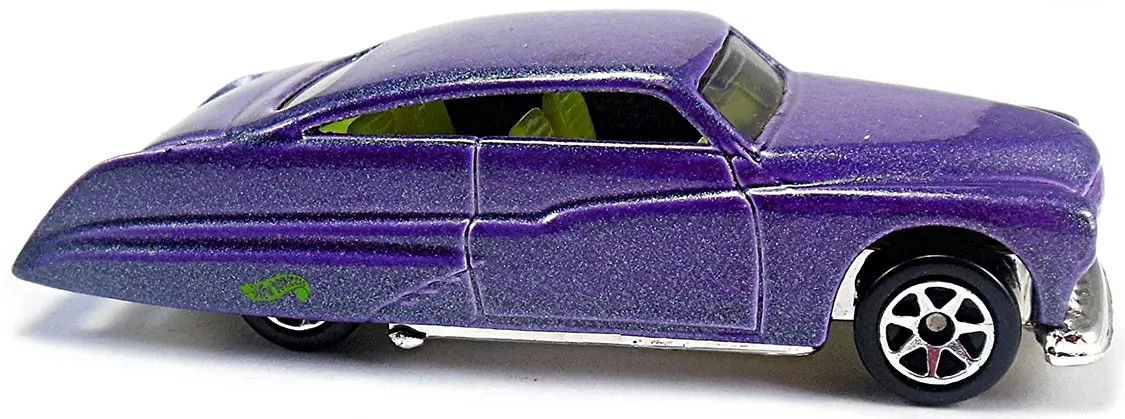
D! There are so many different designs and it’s great that you and so many other designers that work with Hot Wheels had such creative outlets for their expression.
LW Doing a regular car, like a 1940 Willys Gasser or something like that, it’s pretty easy. But when you do a Dream Car with a theme, that takes a little bit of creativity to come up with the way a car that looks completely different yet it would work on the track and it will also sell. There’s a lot of credit to those who accomplish that.
I really like doing real cars or customized hot rods. That was basically my thing growing up.
D! You’re officially retired now. Do you find that there are still some Fantastical designs rolling around your head?
LW I sit around at sketch with a pencil and paper all the time. And yeah, I have some crazy ideas in there. Who knows? Maybe someday they’ll call me and say, “Hey, want to do another line or something” because technically, I’ve worked there for over 50 years. So, yeah!
D! Thanks, Larry. We really appreciate your time and your talent.